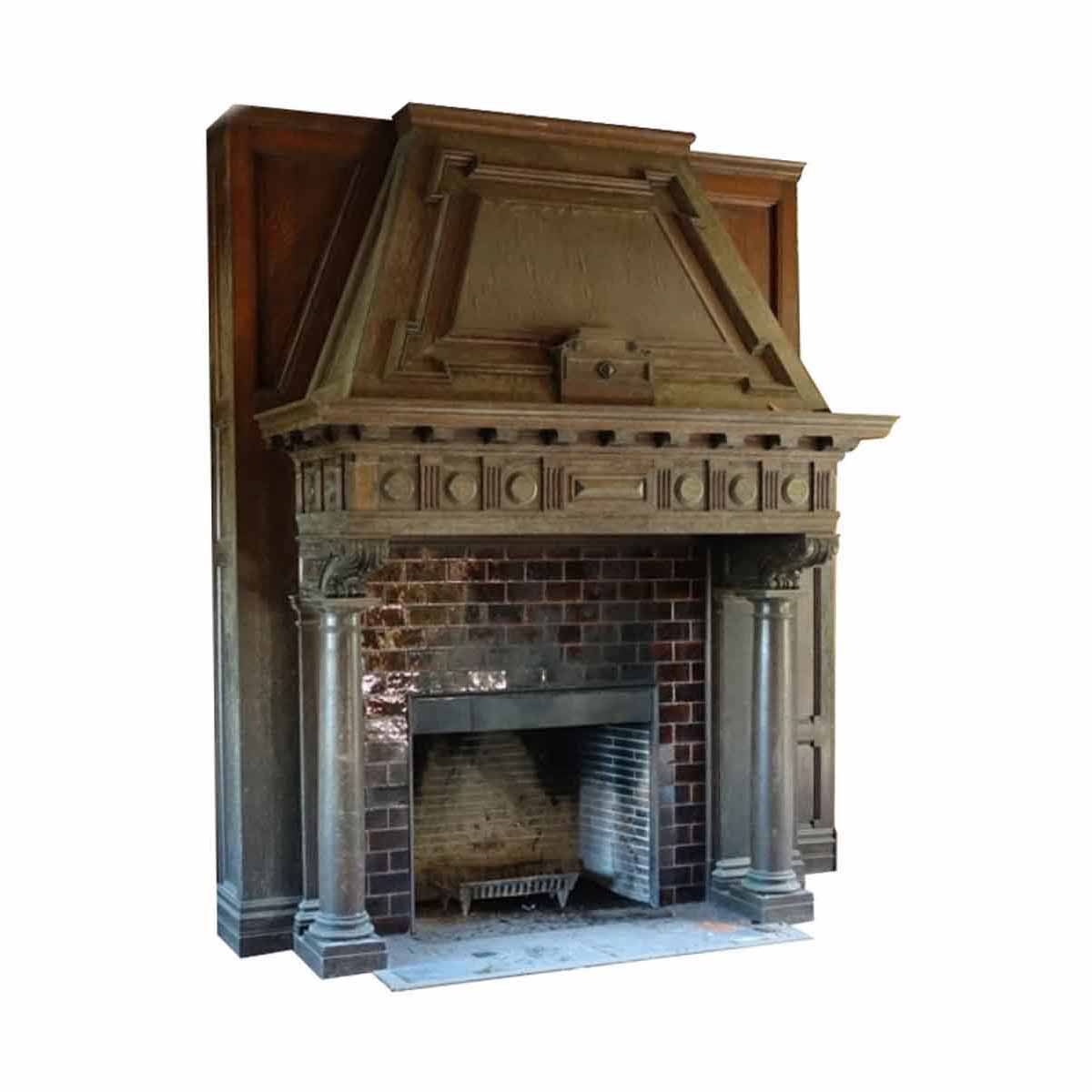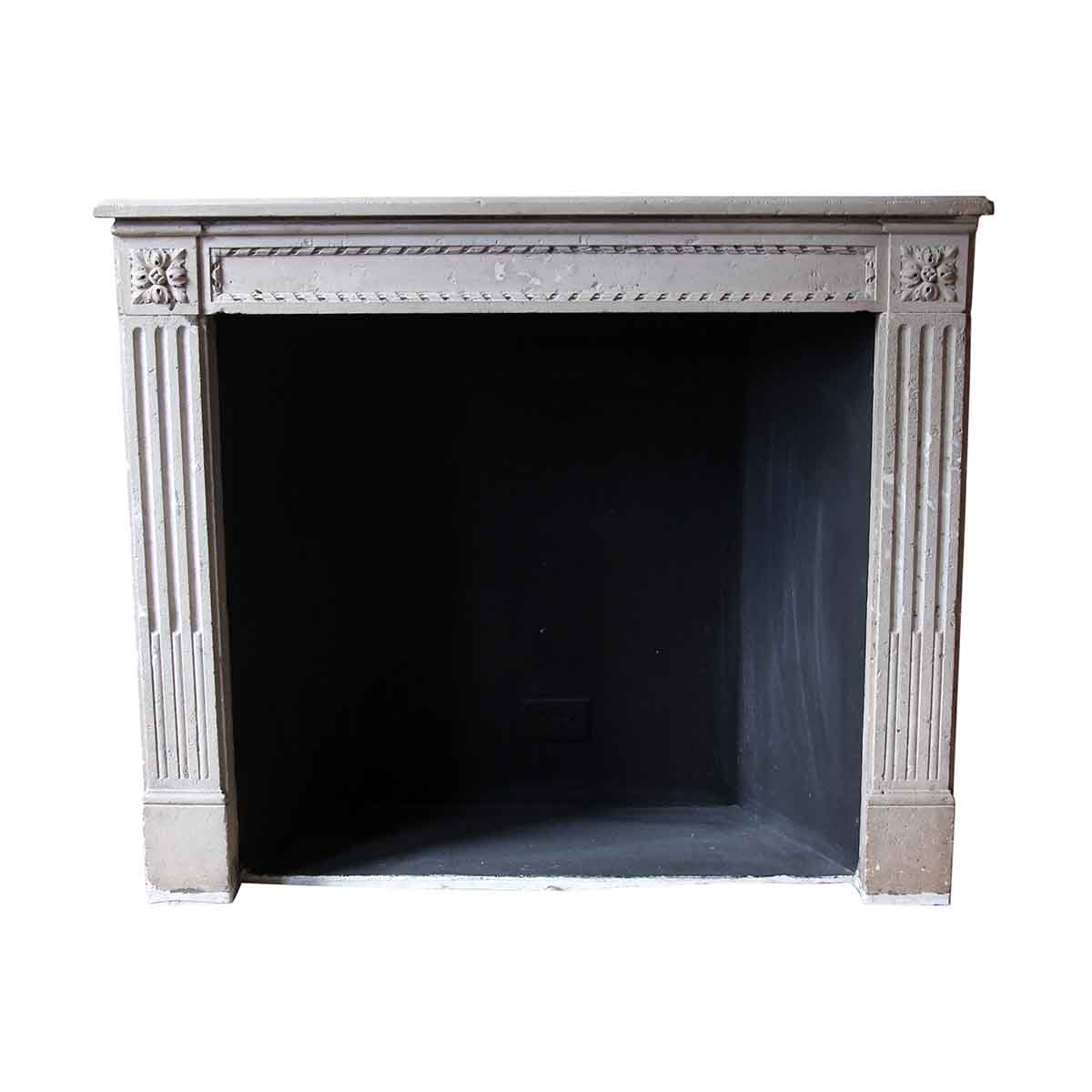If you are renovating your home, or just looking to add a mantel surround to frame your fireplace, you may have questions about which material will best suit your creative vision. Along with aesthetics, there are practical considerations to consider — like, how to care for and maintain the mantelpiece. How much time, expense and effort will I invest in preserving the beauty of the mantel?
Of course, if you have fallen in love with a certain piece or look, then you can work around the practical side. OGT has some tips on both choosing and maintaining the integrity of your mantelpiece:
1. WOOD
Wood as a mantelpiece material is subject to the same stains and damage from scratches and is even more sensitive to water and dampness.
Avoid leaving liquid drinks on the mantel if it has a flat surface to protect it from spills and rings.
The wood should be dusted or wiped with a cloth regularly, like any surface. Use Murphy’s Oil soap or other oil-based cleaning products to clean the wood, using small, soft objects like cotton swabs to clean small spaces and decorative elements.
There is a selection of natural wood finishes to choose from to keep your wood mantelpiece gleaming. Oil finishes are eco-friendly and non-toxic and can be used much as you would a lacquer to touch up a piece. Linseed, tung, and walnut oils are common wood finishes.
One other consideration with wood is to make sure exterminators check the backside and all surrounding areas of the mantel surround to keep it free from pests.
Depending on the style of your selection, a wood mantelpiece can add a rustic, industrial, or historic element to the room. This exquisite mantel salvaged from a NY mansion is one example.

Huge hand carved dark wood tone mantel from Rose Hill, the Tudor Mansion of American impresario Billy Rose.
2. MARBLE
Marble is a porous material, and therefore subject to absorbing various types of stains into the stone. The texture also makes marble vulnerable to damage from harsh abrasives or acids. Stains on marble may come from chimney smoke and soot, oils, adhesives, rust, or organic stains such as from spilled drinks.
The most delicate way to clean marble is to work your way up from a basic soap and water mixture. Dust first with a microfibre cloth. Combine a gentle dish soap with warm water and clean the marble with a soft-bristle brush. Anything with metal bristles or components can scratch the marble surface.
If stains or dirt remain, you can use varying degrees of ammonia diluted with water. Spill stains like coffee, tea, or wine can be treated with hydrogen peroxide and water mixture. For oil stains, which appear as a dark spot on the surface, use a liquid cleanser with bleach (carefully, because bleach can etch the stone), detergent, ammonia, mineral spirits, or acetone. For smoke, you can use commercial smoke removers or hire a professional cleaner. Rust stains should be treated immediately before they become permanent. You can buy a poultice or make one such as the recipe described here. You will want to protect your skin against the harsher chemicals and, of course, avoid mixing bleach and ammonia.
Use microfibre cloths to dry after cleaning. Marble mantels and surrounds should be polished with a standard marble polish to hold the sheen. If the fireplace is used regularly or just for the added protection, use a stone sealer as a preventative measure.
A marble mantelpiece is a striking addition to a home and offers an upscale or vintage flair to the room, like this 19th Century Petite Louis XV Rococo Marble Mantel rescued from the 17th floor of Waldorf Astoria NYC.

French Louis XV Rococo style gray and white marble mantel with the original matching hearth. This mantel was one of a group of antique mantels imported from Europe and installed in the Waldorf Astoria hotel in the 1930s when the hotel was first built on Park Avenue.
3. STONE
Like marble or wood, stone mantels should be dusted regularly. They can be cleaned much like marble, with mild detergent, warm water, and a soft brush. Gently scrub smoke and soot marks and rinse. Dry with a clean cloth.
If the mantel surround was sealed with a stone sealant, stains are easy to remove. A general purpose stain remover can be used on tougher stains. Muriatic acid is also used to remove stains on cast stone, with a solution of 25% percent acid and 75% water. You should protect both skin and eyes if using these chemical solvents. Again, it is a process of experimentation from the least heavy chemicals upwards.
Cast stone mantels do not require polish to maintain their beauty, and regular cleaning should be sufficient maintenance to preserve the look of your stone mantelpiece.
A stone mantel surround lends classic charm to any space, like this rescue from the M Suite, 15th floor, Waldorf Astoria NYC.

Louis XVI French Regency carved limestone mantel. This was imported for installation in the Waldorf Astoria Hotel in the 1930s.
Which piece speaks to you will be the biggest determining factor in the mantel you select for your space. If you need help or suggestions or are looking for a specific style, reach out to one of our salvaged architecture consultants at Olde Good Things, and we may have just the right thing at one of our store locations or warehouses.

